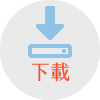簡易檢索 / 詳目顯示
| 研究生: |
孫國仁 Guo-Jen Sun |
|---|---|
| 論文名稱: |
網路時鐘偏斜測量中虛線現象之研究 A Study of Dotted-Line Phenomena for Clock Skew Measurement over Network |
| 指導教授: |
鄧惟中
Wei-Chung Teng |
| 口試委員: |
項天瑞
Tien-Ruey Hsiang 金台齡 Tai-Lin Chin |
| 學位類別: |
碩士 Master |
| 系所名稱: |
電資學院 - 資訊工程系 Department of Computer Science and Information Engineering |
| 論文出版年: | 2016 |
| 畢業學年度: | 104 |
| 語文別: | 中文 |
| 論文頁數: | 55 |
| 中文關鍵詞: | 虛線現象 、時鐘偏斜 、時間精度 |
| 外文關鍵詞: | Dotted Line, Clock Skew, Time Resolution |
| 相關次數: | 點閱:286 下載:8 |
| 分享至: |
| 查詢本校圖書館目錄 查詢臺灣博碩士論文知識加值系統 勘誤回報 |
本研究探討因網路接收端設備時間精度較發送端設備的精度低而生成之虛線(dotted lines)現象,及其對於測量時鐘偏斜的影響。透過網路兩端之時戳接收裝置與發送裝置,設定時間精度和傳輸時間戳記封包,觀察不同時間精度與虛線特性,以及是否影響時鐘偏斜之估算。
本研究經由TCP/IP之UDP傳輸協定,於Wi-Fi無線網路中以不同發送間隔傳輸10萬筆時間戳記封包,再將封包接收時間與偏移量等資訊轉換至散佈圖而求得虛線。從所蒐集到的偏移量中觀察可發現,虛線現象的生成與時間精度確實有關聯性,不同時間精度直接影響虛線長度、斜率和虛線間距,以及虛線呈現於散佈圖上之排列規律。時間精度在接收裝置設定為15.6 ms,發送裝置為1 ms時,虛線長度為9、虛線斜率為-0.0016,虛線間距為0.016 s,循此規律循環排列於散佈圖。應用此特性,則可以濾除離群資料點,再以Quick Piecewise Minimum Algorithm和Linear Regression Method等演算法估算所有時間精度條件下之時鐘偏斜值,誤差皆在1 ppm以內。
With the rise of cloud computing concepts, the popularization of portable devices, and the development of the Internet of Things, a lot of discussion on device identification regarding personal information privacy and power consumption has surfaced. Different devices have distinct clock skew, and the clock skew estimated by the timestamp taken from network data packets can be used as a fingerprint for device identification. Adjustable time resolution provides the option for different levels of performance, and is useful for finding the optimal balance between energy efficiency and performance. This study investigated the dotted lines phenomenon caused by time resolution and its effects on measuring clock skew. Using the timestamp from transmitting and receiving devices on both ends of the network, the time resolution can be set and sent with the timestamp packet to observe the dotted lines characteristics with different time resolutions and its impact on the clock skew estimation can be determined.
The dotted lines phenomenon is reflected in the information such as the time received and time offset shown on a scatter diagram that is created when one million timestamp packages sent at different time intervals via the Wi-Fi network using the transmission protocol UDP in TCP/IP. As shown from the results, it was observed that there is a correlation between the formation of the dotted lines phenomenon and time resolution. Time resolution directly affects the length, slope, and intervals of the dotted lines as well as the sequence pattern of the scatter diagram. When the time resolution was set to 15.6 ms on the receiving device and 1 ms on the transmitting device, the length of a dotted line was 9, with a slope of -0.0016, and its interval was 0.016 seconds. The data were scattered following this trend. Using these characteristics to filter out the outlier point, the Quick Piecewise Minimum Algorithm and the Linear Regression Method were employed to estimate the clock slew values under each time resolution with an accuracy of within 1 ppm.
[1] Tadayoshi Kohno, Andre Broido, and K.C. Claffy, “Remote Physical Device Fingerprinting, ” IEEE Transactions on Dependable and Secure Computing, Vol. 2, No. 2, pp. 93-108, 2005.
[2] Timers, Timer Resolution, and Development of Efficient Code [Online]. Available : http://download.microsoft.com/download/3/0/2/3027D574-C433-412A-A8B6-5E0A75D5B237/Timer-Resolution.docx
[3] David L. Mills, “Network Time Protocol (Version 3): Specification, Implementation and Analysis,” IETF, RFC 1305, 1992. [Online]. Available : https://www.rfc-editor.org/rfc/rfc1305.txt
[4] 周品言,〈藍牙通訊傳輸延遲之研究〉,國立台灣科技大學碩士論文,民國一百零三年。
[5] Ding-Jie Huang, Kai-Ting Yang, Wei-Chung Teng, “Design of Client Device Identification by Clock Skew in Clouds,” in Proceedings of 2014 IEEE International Conference on Automation Science and Engineering (CASE), pp. 1133-1138, 2014.
[6] Suman Jana and Sneha Kumar Kasera, “On Fast and Accurate Detection of Unauthorized Wireless Access Points Using Clock Skews,” in Proceedings of the 14th ACM International Conference on Mobile Computing and Networking, pp. 104-115, 2008.
[7] Ding-Jie Huang, Kai-Ting Yang, Chien-Chun Ni, Wei-Chung Teng, Tien-Ruey Hsiang, and Yuh-Jye Lee, “Clock Skew Based Client Device Identification in Cloud Environments,” in Proceedings of the 2012 IEEE 26th International Conference on Advanced Information Networking and Applications, pp. 526-533, 2012.
[8] Marius Cristea and Bogdan Groza, “Fingerprinting Smartphones Remotely via ICMP Timestamps,” IEEE Communications Letters, Vol. 17, No. 6, pp. 1081-1083, 2013.
[9] 鄭理介,〈基於時脈偏移的可攜式裝置識別技術〉,國立台灣科技大學碩士論文,民國一百零二年。
[10] Vern Paxson, “On Calibrating Measurements of Packet Transit Times,” in Proceedings of the 1998 ACM SIGMETRICS Joint International Conference on Measurement and Modeling of Computer Systems, Vol. 26, No. 1, pp. 11-21, 1998.
[11] Sue B. Moon, Paul Skell, and Don Towsley, “Estimation and Removal of Clock Skew from Network Delay Measurements,” in Proceedings of INFOCOM '99 Eighteenth Annual Joint Conference of the IEEE Computer and Communications Societies, Vol. 1, pp. 227-234, 1999.
[12] 陳宗翰,〈針對高延遲抖動網路的時脈偏移測量方法〉,國立台灣科技大學碩士論文,民國一百零三年。
[13] Komang Oka Saputra, Wei-Chung Teng and Tsung-Han Chen, “Hough Transform Based Clock Skew Measurement Over Network,” IEEE Transactions on Instrumentation and Measurement, Vol. 64, No. 12, pp. 3209-3216, 2015.
[14] 楊祐齊,〈一個改良的基於霍氏轉換時脈偏移測量方法。〉,國立台灣科技大學碩士論文,民國一百零四年。
[15] Bijoy A. Jose, Manuj R. Sabharwal and Abhishek Agrawal, “Power implications of high resolution timer tick settings,” in Proceedings of 2010 International Conference on Energy Aware Computing, 2010.
[16] Ding-Jie Huang, Wei-Chung Teng, Chih-Yuan Wang, Hsuan-Yu Huang, and Joseph M. Hellerstein, “Clock Skew Based Node Identification in Wireless Sensor Networks,” in Proceedings of IEEE Global Telecommunications Conference, pp. 1877-1881, 2008.
[17] Ding-Jie Huang and Wei-Chung Teng, “A defense against clock skew replication attacks in wireless sensor networks,” Journal of Network and Computer Applications, Vol. 39, pp. 26-37, 2013.
[18] Darryl Veitch, Satish Babu, and Attila Pàsztor, “Robust Synchronization of Software Clocks Across the Internet,” in Proceedings of the 4th ACM SIGCOMM Conference on Internet Measurement, pp. 219-232, 2004.
[19] Komang Oka Saputra, Wei-Chung Teng, Yi-Hao Chu, “A Clock Skew Replication Attack Detection Approach Utilizing the Resolution of System Time”, in Proceedings of 2015 IEEE/WIC/ACM International Conference on Web Intelligence and Intelligent Agent Technology (WI-IAT), Vol. 3, pp. 211-214, 2015.
